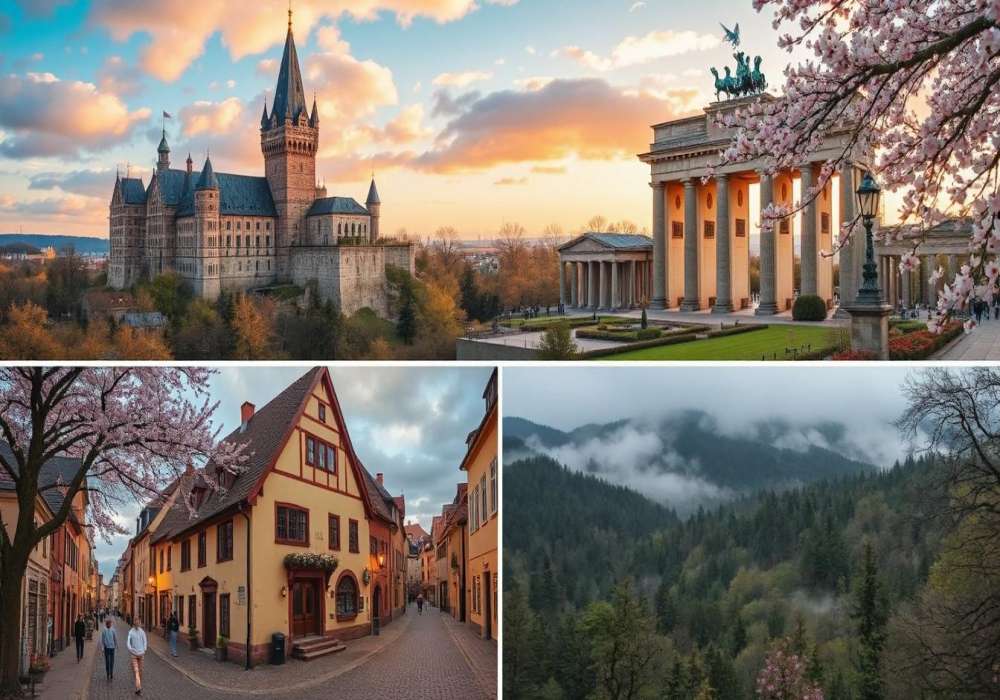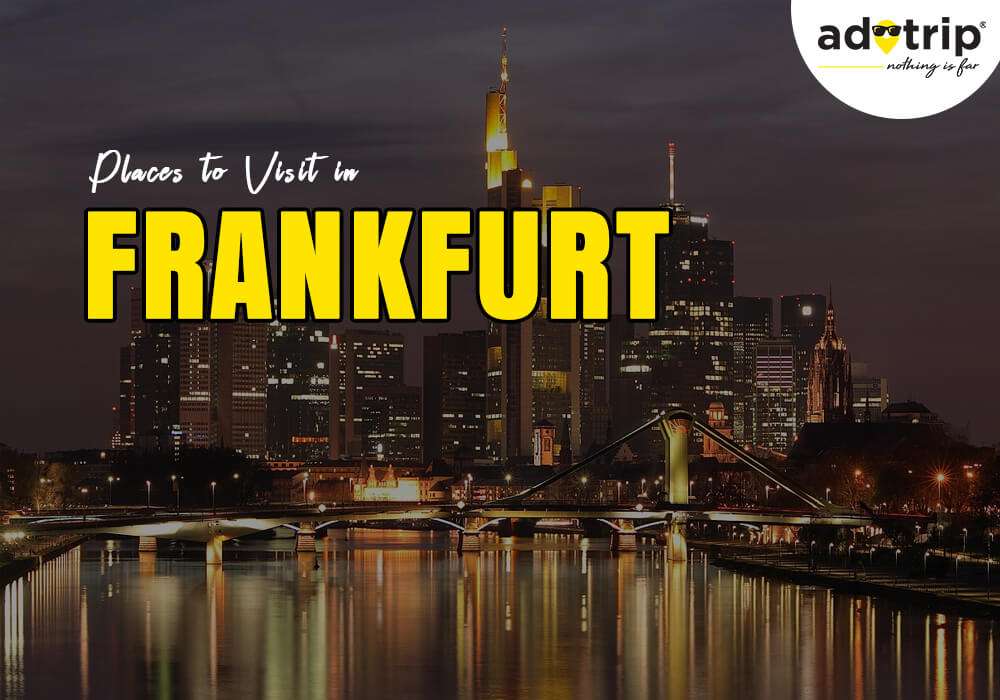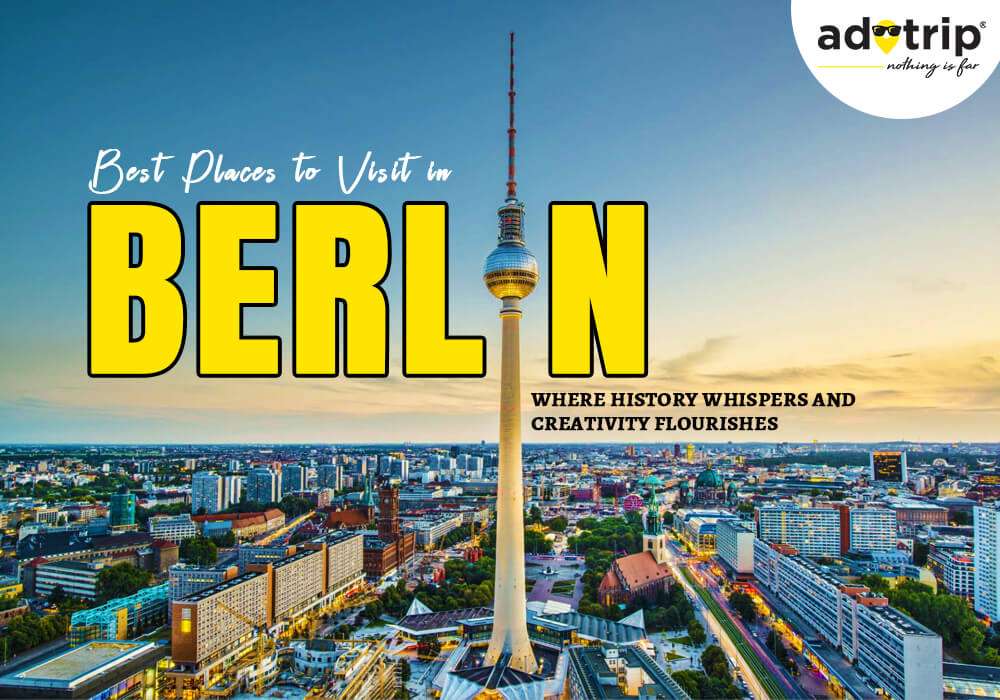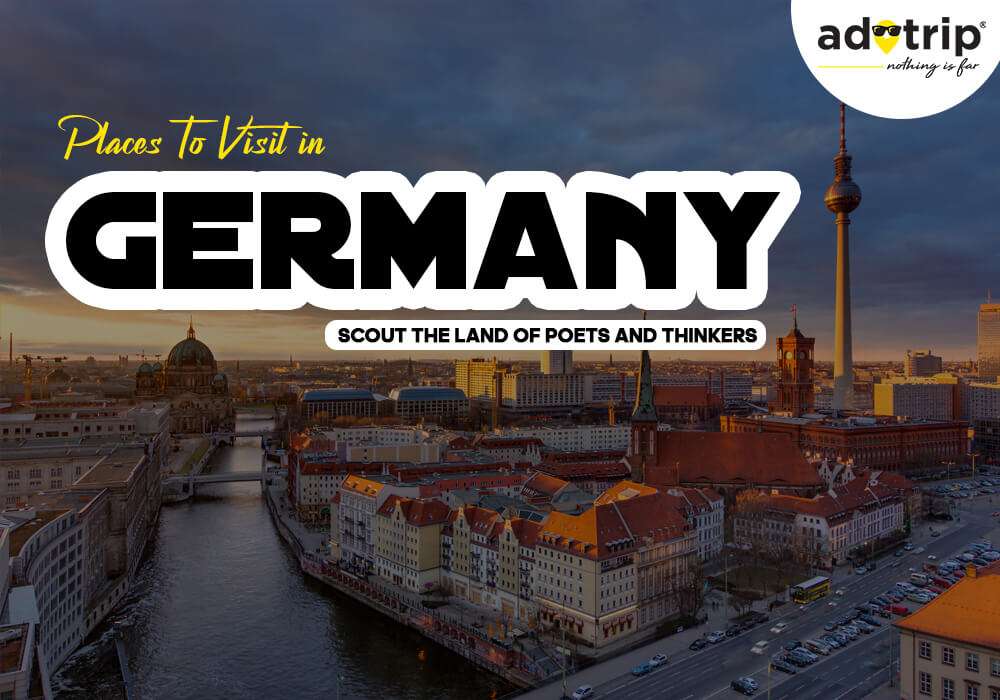
Last Updated At: 10-Sep-2025
10 Best Places To Visit In Germany In March 2026
March is a magical time to explore Germany's diverse and enchanting landscapes. As winter bids adieu and the first whispers of spring emerge, the country undergoes a picturesque transformation that beckons travellers to discover its best-kept secrets. From the charming streets of Heidelberg, where historic architecture meets vibrant student life, to the breathtaking beauty of the Bavarian Alps, cloaked in a delicate blanket of lingering snow, Germany in March is a tapestry of contrasting wonders. The iconic castles along the Rhine River come to life against a backdrop of budding vineyards. At the same time, the cultural hubs of Berlin and Munich pulsate with renewed energy, hosting a myriad of events and festivals.
Pack your layers, embrace the crisp air, and embark on a journey to the best places and travel tips for visiting Germany in March, where each destination unfolds a unique chapter in the country's rich tapestry.
List Of 10 Best Places To Visit In Germany In March 2026
- Neuschwanstein Castle, Bavaria | Blend of Winter Charm and Pre-spring Serenity
- Heidelberg | Perfect for Pleasant Transition
- Black Forest | Cuckoo Clocks
- Berlin | Blend of Tradition and Modernity
- Cologne Cathedral, North Rhine-Westphalia | Testament to the City's Resilience
- Sylt | Windsurfing, Kite Flying
- Nuremberg, Bavaria | Museums Galore
- Lake Constance | A Peaceful Retreat
- Rothenburg ob der Tauber, Bavaria | Symbol of Mediaeval Germany
- Dresden | Rich Cultural Heritage
1. Neuschwanstein Castle, Bavaria | Blend of Winter Charm and Pre-spring Serenity
Neuschwanstein Castle, perched on a rugged hill in Bavaria, is a fairytale-like fortress that attracts visitors worldwide. The castle is surrounded by snow-capped peaks in March, creating a magical winter wonderland. The crisp air and fewer tourists enhance the enchanting atmosphere. One of the top tourist attractions for March travel in Germany, the snow-covered landscape transforms the castle into a picture-perfect scene from a fantasy tale, making it an ideal March destination.
- Major Attractions: Unique Architecture
- Best Things to Do: Explore the castle's opulent interiors, stroll through the snow-covered courtyards, and enjoy panoramic views of the surrounding mountains.
2. Heidelberg | Perfect for Pleasant Transition
Nestled along the Neckar River, Heidelberg is a picturesque city known for its romantic old town and the historic Heidelberg Castle. The city comes alive in March with blooming flowers and budding trees, creating a vibrant atmosphere. Heidelberg offers the best outdoor activities in Germany during March, like sightseeing. The charming blend of mediaeval architecture and spring blossoms adds a touch of romance to Heidelberg's already enchanting streets.
- Major Attractions: Church of the Holy Spirit, Heidelberg Palace
- Best Things to Do: Visit Heidelberg Castle, stroll across the Old Bridge, and hike up to the Philosophers' Way for panoramic views of the city.
3. Black Forest | Cuckoo Clocks
The Black Forest, a dense and mystical woodland, is a nature lover's paradise with charming villages and scenic landscapes. March brings a sense of awakening to the forest as the snow begins to melt, revealing lush greenery and blooming wildflowers. The contrast between lingering snow and emerging spring foliage creates a captivating and diverse visual experience.
- Major Attractions: Triberg Waterfalls
- Best Things to Do: Explore and visit cuckoo clock workshops and take a boat ride on Titisee Lake.
4. Berlin | Blend of Tradition and Modernity
Berlin, the capital city, is a vibrant metropolis with a rich history, contemporary culture, and iconic landmarks like the Brandenburg Gate. One of the historic towns to explore in Germany in March, March marks the end of winter, and the city begins to bloom with cherry blossoms, creating a beautiful contrast against historical architecture. Berlin's parks and gardens burst into colour, offering a refreshing and visually stunning backdrop to the cityscape.
- Major Attractions: Berlin Wall Exhibition and Berlin War Memorial
- Best Things to Do: Visit the Berlin Wall, explore Museum Island, and take a leisurely walk through Tiergarten Park.
Read More : Culture Of Germany
5. Cologne Cathedral, North Rhine-Westphalia | Testament to the City's Resilience
The Cologne Cathedral, a masterpiece of Gothic architecture, dominates the city skyline and is a UNESCO World Heritage site. It is one of the most popular cultural sites to visit in Germany in March. In March, the cathedral is surrounded by a serene atmosphere as spring slowly unfolds, creating a peaceful and reflective ambience. The intricate details of the cathedral's façade are accentuated by the soft sunlight of early spring, offering a unique perspective.
- Major Attractions: Gold artworks and a stained-glass window dating back to the 12th century.
- Best Things to Do: Climb to the top of the cathedral for panoramic views, explore the nearby Old Town, and take a scenic boat cruise on the Rhine River.
6. Sylt | Windsurfing, Kite Flying
Sylt, a North Sea island, is known for its pristine beaches, charming villages, and unique maritime culture. March offers a peaceful atmosphere as the island begins to awaken from winter, with fewer tourists and a tranquil coastline. The rugged coastline, dunes, and wide sandy beaches take on a serene quality as the island transitions to spring.
Significance: Sylt is a popular destination for Windsurfing, Kite Flying, and enjoying fresh seafood in cosy beachfront restaurants.
- Major Attractions: Ellenbogen, Rotes Kliff
- Best Things to Do: Explore Kampen's iconic red cliffs, relax on Westerland Beach, and visit the Sylt Aquarium.
7. Nuremberg, Bavaria | Museums Galore
Nuremberg, a city with a rich mediaeval history, is known for its well-preserved mediaeval architecture and cultural heritage. March sees the awakening of the city's gardens and parks, adding a touch of colour to the historic surroundings. Combining historical landmarks like the Nuremberg Castle and blooming gardens creates a captivating visual experience.
- Major Attractions: Nuremberg Castle, St. Lawrence Church
- Best Things to Do: Visit Nuremberg Castle, explore the Imperial Castle grounds, and wander through the charming Old Town.
8. Lake Constance | A Peaceful Retreat
Lake Constance, bordered by Germany, Austria, and Switzerland, is a stunning freshwater lake surrounded by picturesque towns and landscapes. In March, the lake begins to thaw, revealing crystal-clear waters and the surrounding alpine peaks are still capped with snow.
The combination of water, mountains, and charming lakeside villages creates a breathtaking and tranquil setting.
- Major Attractions: Meersburg.Castle, Rhine Falls
- Best Things to Do: Take a boat cruise on Lake Constance, visit Mainau Island, and explore the mediaeval town of Meersburg.
9. Rothenburg ob der Tauber, Bavaria | Symbol of Mediaeval Germany
Rothenburg ob der Tauber is a well-preserved mediaeval town that transports visitors with its cobblestone streets and half-timbered houses. March offers a quieter and more intimate experience as the town begins to shake off the winter chill with budding flowers and emerging greenery. The mediaeval architecture is complemented by the soft hues of spring, creating a charming and romantic atmosphere.
- Major Attractions: Medieval Crime Museum, Church of St. James
- Best Things to Do: Walk along the town walls, visit the Medieval Crime Museum, and savour local specialities in the charming market square.
10. Dresden | Rich Cultural Heritage
Dresden, often called the "Florence on the Elbe," is known for its baroque architecture, art museums, and cultural richness. March brings a sense of renewal to the city as the Elbe River thaws and the gardens around the Zwinger Palace come to life with blooming flowers. The combination of historic landmarks, such as the Frauenkirche, and the emerging spring foliage creates a visually stunning backdrop.
- Major Attractions: Baroque architecture and the wide range of museums
- Best Things to Do: Visit the Frauenkirche, explore the Zwinger Palace, and stroll along the picturesque Elbe River.
March in Germany offers a unique blend of cultural richness and natural beauty. Whether you're drawn to the serene tranquillity of the Black Forest or the bustling markets of Cologne, March in Germany promises a travel experience that seamlessly blends the old-world charm with the promise of springtime renewal. Plan your trip to Germany and places across the globe with Adotrip.com. Enjoy a wealth of information, end-to-end travel assistance and BOOK Flights, Hotels, and Tour Packages under one roof.
With us, nothing is far!
Frequently Asked Questions
Q1.What are the top destinations in Germany to visit in March?
A1. The top destinations in Germany to visit in March are:
- Neuschwanstein Castle, Bavaria
- Heidelberg
- Black Forest
- Berlin
- Cologne Cathedral, North Rhine-Westphalia
- Sylt
- Nuremberg, Bavaria
- Lake Constance
- Rothenburg ob der Tauber, Bavaria
- Dresden
Q2. Are there any festivals or events happening in Germany during March?
A2. Festivals or events happening in Germany during March are:
- Jason Derulo
- Wagner Gala
Q3. How's the weather in Germany in March, and what should I pack?
A3. March is the optimistic transition toward spring with milder temperatures for exploring Germany's historic cities. You should pack a light jacket and comfortable shoes.
Q4. Can you recommend any historical or cultural sites that are particularly enjoyable in March?
A4. Historic or cultural sites that are particularly enjoyable in March are:
- Heidelberg
- Berlin
- North Rhine-Westphalia
- Nuremberg, Bavaria
- Bavaria
- Dresden
Q5. Are there any specific regions in Germany known for springtime beauty?
A5. Regions in Germany known for springtime beauty are:
- Bonn
- Munich
- Hamburg
- Stuttgart
- Münster
- Magdeburg
- Berlin
--- Published By Adotrip
Latest Blogs

Cash in the Wild: My Safari Adventure Across Kenya with Only...

One Day Picnic Spot Near Pune - Adventure, Trekking and Natu...

One Day Picnic Spots Near Mumbai - Monsoon, Adventure, Beach...

The Best Places to Go in Thailand in 2025












.png)

 Dubai
Dubai Malaysia
Malaysia USA
USA





